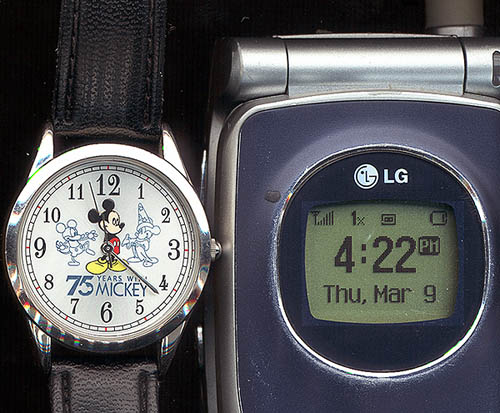Time & Ruth Bellville
Today, Ruth Belville tells us the time. The University of Houston's College of Engineering presents this series about the machines that make our civilization run, and the people whose ingenuity created them.
Back in the 1930s, we set our clocks by radio. "At the tone, the time will be exactly 7:36 AM (pause beep)." How modern that once seemed! Now it strikes me as downright magical to have the precise time of day -- always right there on the face of my cell phone. It's incapable of losing even a second. Meanwhile, radio can be more casual about telling time. No one expects to set a chronometer by it. Ten seconds either way is acceptable.
In the mid-nineteenth century, the Greenwich Observatory provided very accurate time. In the Observatory, off to the east of London, people knew the exact time. But what about everyone else?
Two different solutions arose around the same time. One was telegraphic. If you happened to have one of the new telegraph receivers in your office, you could await a telegraphic beep at a certain time of day. (In the 1840s, inventor Alexander Bain developed a system for automatically correcting a distant clock by means of a telegraphic link, but that idea was too far ahead of its time.)
The second solution was so basic -- so elementary -- that it catches us off guard. Observatory worker Henry Belville created a service for two hundred clients in 1836. Each morning he stopped by the Observatory to set his chronometer against Greenwich time; then he set off in his buggy to set the clocks of his clients. Henry died twenty years later and his widow continued the trade. When she retired in 1892, their daughter Ruth kept it going.
The Bellville service hit a snag in 1908. Writer Stephen Battersby tells about John Wynne, the director of the largest company devoted to distributing time signals telegraphically.
Wynne got up before a group of London city councilors and aldermen to denounce the sloppiness of nontelegraphic means for distributing time. His talk included a full-scale assault on Ruth Bellville. There's evidence that he attacked not only her low-tech method of distributing time, but her character as well.
But homes and small businesses didn't have in-house telegraph stations. For some, having accurate Greenwich time in their houses was simply a status thing. In any case, the Greenwich Observatory shrugged off Wynne's attack, and Ruth Belville's subscriber list actually grew as a result of the publicity he'd given her.
So she kept making her rounds. People used her services even after radio entered their lives. Only as WW-II began did 86-year-old Ruth Belville close down her service to fifty remaining customers. A 103-year-old business came to an end.
How did it last so long? Probably because it was a user-friendly technology that did the job. I thought about Ruth Belville as I reset my watch to my cell phone just now. Put an old friendly face on anything, and we'll stay with it beyond its time. I realize that as I glance at the smiling face of Mickey Mouse on my watch. No matter that he's being made obsolete by a cell phone.
I'm John Lienhard, at the University of Houston, where we're interested in the way inventive minds work.
S. Battersby, The Lady Who Sold Time. New Scientist, Feb. 25-March 3, 2006, pp. 52-53.
As a matter of interest, on-air people at our station, KUHF-FM tell me that they consider they have no more than a plus-or-minus twelve second window when they announce the time of day to the nearest minute.
